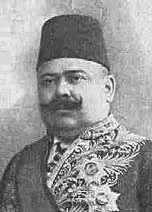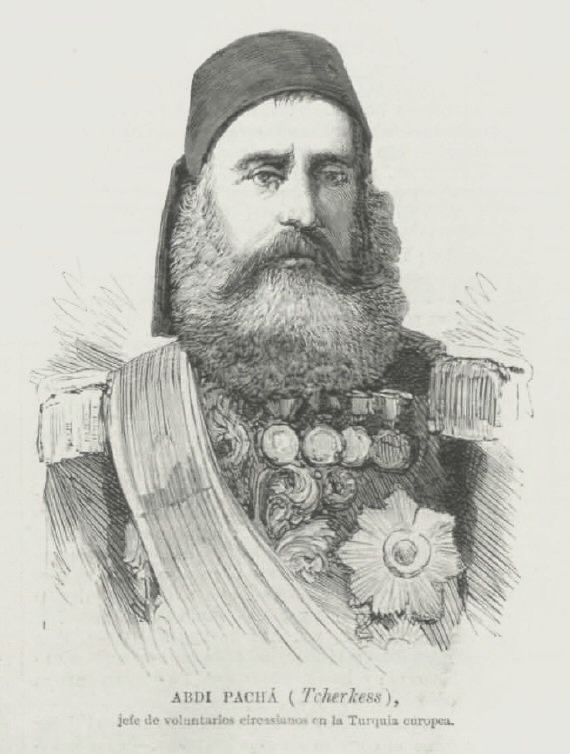Court uniform and dress in the Ottoman Empire on:
[Wikipedia]
[Google]
[Amazon]
 The official court uniform and dress of the Ottoman Empire were required to be worn by those in attendance at the imperial court in the nineteenth century, with the aim of being on the same line as most European nations. It consisted of European-inspired clothing in the
The official court uniform and dress of the Ottoman Empire were required to be worn by those in attendance at the imperial court in the nineteenth century, with the aim of being on the same line as most European nations. It consisted of European-inspired clothing in the
 The Tanzimat reforms emerged from the minds of reformist sultans like
The Tanzimat reforms emerged from the minds of reformist sultans like  After the French military mission in 1796, French practices became very popular within Ottoman society. After the creation of the first
After the French military mission in 1796, French practices became very popular within Ottoman society. After the creation of the first
File:Turkey, 1850-96 (NYPL b14896507-435693).tiff, French-inspired court dresses (Note the white gloves,
File:Ibrahim hakki2.jpg,
 The official court uniform and dress of the Ottoman Empire were required to be worn by those in attendance at the imperial court in the nineteenth century, with the aim of being on the same line as most European nations. It consisted of European-inspired clothing in the
The official court uniform and dress of the Ottoman Empire were required to be worn by those in attendance at the imperial court in the nineteenth century, with the aim of being on the same line as most European nations. It consisted of European-inspired clothing in the Empire style
The Empire style (, ''style Empire'') is an early-nineteenth-century design movement in architecture, furniture, other decorative arts, and the visual arts, representing the second phase of Neoclassicism. It flourished between 1800 and 1815 durin ...
. It was introduced during the early stages of the Tanzimat
The Tanzimat (; ota, تنظيمات, translit=Tanzimāt, lit=Reorganization, ''see'' nizām) was a period of reform in the Ottoman Empire that began with the Gülhane Hatt-ı Şerif in 1839 and ended with the First Constitutional Era in 187 ...
modernization period until the end of the First World War
World War I (28 July 1914 11 November 1918), often abbreviated as WWI, was List of wars and anthropogenic disasters by death toll, one of the deadliest global conflicts in history. Belligerents included much of Europe, the Russian Empire, ...
.
History
 The Tanzimat reforms emerged from the minds of reformist sultans like
The Tanzimat reforms emerged from the minds of reformist sultans like Mahmud II
Mahmud II ( ota, محمود ثانى, Maḥmûd-u s̠ânî, tr, II. Mahmud; 20 July 1785 – 1 July 1839) was the 30th Sultan of the Ottoman Empire from 1808 until his death in 1839.
His reign is recognized for the extensive administrative, ...
, his son Abdulmejid I
Abdulmejid I ( ota, عبد المجيد اول, ʿAbdü'l-Mecîd-i evvel, tr, I. Abdülmecid; 25 April 182325 June 1861) was the 31st Sultan of the Ottoman Empire and succeeded his father Mahmud II on 2 July 1839. His reign was notable for the r ...
and prominent, often European-educated bureaucrats, who recognised that the old religious and military institutions no longer met the needs of the empire. Most of the symbolic changes, such as uniforms, were aimed at changing the mindset of imperial administrators. Many of the officials affiliated with the government were encouraged to wear a more western style of dress. Many of the reforms were attempts to adopt successful European practices. The reforms were heavily influenced by the Napoleonic Code and French law under the Second French Empire
The Second French Empire (; officially the French Empire, ), was the 18-year Imperial Bonapartist regime of Napoleon III from 14 January 1852 to 27 October 1870, between the Second and the Third Republic of France.
Historians in the 1930s ...
as a direct result of the increasing number of Ottoman students being educated in France.
 After the French military mission in 1796, French practices became very popular within Ottoman society. After the creation of the first
After the French military mission in 1796, French practices became very popular within Ottoman society. After the creation of the first cabinet
Cabinet or The Cabinet may refer to:
Furniture
* Cabinetry, a box-shaped piece of furniture with doors and/or drawers
* Display cabinet, a piece of furniture with one or more transparent glass sheets or transparent polycarbonate sheets
* Filin ...
, Mahmud II ordered several bureaucrats to the courts of France and other nations around the globe to observe not only clothing but also innovated institutions, which were acceptable for that era. The first new court uniforms were worn around 1839, the time of the sultan's death. His son Abdulmejid I succeeded him and French-style court uniform and dress were officially set. European-style clothing was also popular among the upper class, as redingotes, jackets
A jacket is a garment for the upper body, usually extending below the hips. A jacket typically has sleeves, and fastens in the front or slightly on the side. A jacket is generally lighter, tighter-fitting, and less insulating than a coat, which ...
, waistcoats, frock coats
A frock coat is a formal men's coat characterised by a knee-length skirt cut all around the base just above the knee, popular during the Victorian and Edwardian periods (1830s–1910s). It is a fitted, long-sleeved coat with a centre vent at t ...
, ties, sharp-pointed and high-heeled shoes were not unusual during the Tanzimat modernization period.
Republican period
After the abolition of the Ottoman monarchy, thewhite tie
White tie, also called full evening dress or a dress suit, is the most formal in traditional evening western dress codes. For men, it consists of a black tail coat (alternatively referred to as a dress coat, usually by tailors) worn over a wh ...
was introduced for all government officials including the president.
Gallery
Court uniforms 1839-1876
epaulettes
Epaulette (; also spelled epaulet) is a type of ornamental shoulder piece or decoration used as insignia of rank by armed forces and other organizations. Flexible metal epaulettes (usually made from brass) are referred to as ''shoulder scales'' ...
, trousers and collars)
File:Turkey, 1850-96 (NYPL b14896507-435694).tiff, Another example of French-inspired court dresses, mainly based on uniforms which were being used in the Second French Empire
File:Mahmud II.jpg, A painting of Mahmud II appearing in European clothes along with a cloak
File:Abdulmejid.jpg, Sultan Abdulmejid I in clothes based on the French model
File:Damat Halil Rifat Paşa.JPG, Damat Gürcü Halil Rifat Pasha, statesman
File:Mustafa reshid pasha.jpg, Mustafa Reshid Pasha
Mustafa ( ar, مصطفى
, Muṣṭafā) is one of the names of Prophets and messengers in Islam, Prophet Muhammad, and the name means "chosen, selected, appointed, preferred", used as an Arabic language, Arabic given name and surname. Mustafa is ...
, the chief architect behind the Tanzimat reforms
File:Giuseppe Donizetti.jpg, Giuseppe Donizetti Pasha
File:Edouard Dubufe Congrès de Paris.jpg, Mehmed Emin Âli Pasha
Mehmed Emin Âli Pasha, also spelled as Mehmed Emin Aali (March 5, 1815 – September 7, 1871) was a prominent Ottoman statesman during the Tanzimat period, best known as the architect of the Ottoman Reform Edict of 1856, and for his role in ...
(on the far right) wearing the diplomatic uniform
Diplomatic uniforms are ornate uniforms worn by diplomats— ambassadorial and consular officers—at public occasions. Introduced by European states around 1800 and patterned on court dress, they were abandoned by most countries in the twenti ...
Court uniforms 1876-1922
Ibrahim Hakki Pasha
Ibrahim Hakki Pasha ( tr, İbrahim Hakkı Paşa 1862–1918) was an Ottoman statesman, who served as Grand Vizier of the Ottoman Empire between 1910 and 1911. He served as Ottoman ambassador to Germany and to the Kingdom of Italy.
Hakki Pasha ...
File:Ferid Pascha.jpg, Damat Ferid Pasha
File:Ahmed Cevdet Pasha.jpg, Ahmed Cevdet Pasha
File:Kibrisli Kamil Pasha.jpg, Kâmil Pasha
Mehmed Kâmil Pasha ( ota, محمد كامل پاشا مصري زاده; tr, Kıbrıslı Mehmet Kâmil Paşa, "Mehmed Kamil Pasha the Cypriot"), also spelled as Kiamil Pasha (1833 – 14 November 1913), was an Ottoman statesman and liberal poli ...
File:HalilRifat Pasha.jpg, Halil Rifat Pasha
Halil Rifat Pasha ( Modern Turkish: ''Halil Rıfat Paşa''; 1820According to the obituary in The Times, he was born about 1807. This would make him almost 95 years old at the time of his death. Other sources give 1820.–9 November 1901) was an ...
File:Abdurrahman Nureddin Pasha.jpg, Abdurrahman Nurettin Pasha
File:Sadullah pasa large.jpg, Sadullah Pasha
Sadullah Pasha (1838 – 14 January 1891) was an Ottoman statesman in the late Tanzimat period. He is most notable as the Ottoman ambassador to Berlin following the aftermath of the Russo-Turkish War of 1877–78.
Early life and career
Sadull ...
File:Abdurrahman Sheref Bey.jpg, Abdurrahman Şeref Bey
File:Großwezir Prinz Said Halim Pascha 1915 C. Pietzner.jpg, Said Halim Pasha
Mehmed Said Halim Pasha ( ota, سعيد حليم پاشا ; tr, Sait Halim Paşa; 18 or 28 January 1865 or 19 February 1864 – 6 December 1921) was an Ottoman statesman of Albanian originDanişmend (1971), p. 102 who served as Grand Vizier o ...
File:Djemal Pasha3.jpg, Djemal Pasha
Ahmed Djemal ( ota, احمد جمال پاشا, Ahmet Cemâl Paşa; 6 May 1872 – 21 July 1922), also known as Cemal Pasha, was an Ottoman military leader and one of the Three Pashas that ruled the Ottoman Empire during World War I.
Djemal w ...
File:Ahmed Tevfik Pasha portrait.jpg, Ahmet Tevfik Pasha
Ahmet Tevfik Pasha ( ota, احمد توفیق پاشا; 11 February 1845 – 8 October 1936), later Ahmet Tevfik Okday after the Turkish Surname Law of 1934, was an Ottoman statesman of Crimean Tatar origin. He was the last Grand vizi ...
File:Hasan Fehmi Paşa.JPG, Hasan Fehmi Pasha
File:Mehmed Kadri Pasha.jpg, Mehmed Kadri Pasha
Mehmed (modern Turkish: Mehmet) is the most common Bosnian and Turkish form of the Arabic name Muhammad ( ar, محمد) (''Muhammed'' and ''Muhammet'' are also used, though considerably less) and gains its significance from being the name of Muh ...
File:Agah Efendi.jpg, Agah Efendi
File:NuriBajá1906--neareastpresents00lequuoft.png, Nuri Pasha
File:Mehmet raif pasaa.jpg, Mehmed Raif Pasha
File:Alexandros Karatheodoris.jpg, Alexander Karatheodori Pasha
Alexander Karatheodori Pasha ( el, Αλέξανδρος Καραθεοδωρής; 1833–1906) was an Ottoman Greek statesman and diplomat. He was involved in diplomatic affairs following the aftermath of the Russo-Turkish War of 1877–78.
...
File:Turhan Pasha.jpg, Turhan Pasha Përmeti
Turhan Pasha Përmeti (19 December 1846 – 18 February 1927) was an Ottoman-Albanian politician, who served as the 2nd Prime Minister of Albania. He was also in service of the Ottoman state and held the title of Pasha of the Ottoman Empire.
Am ...
References
{{reflist Court uniforms and dress Ottoman clothing Ottoman court Material culture of royal courts